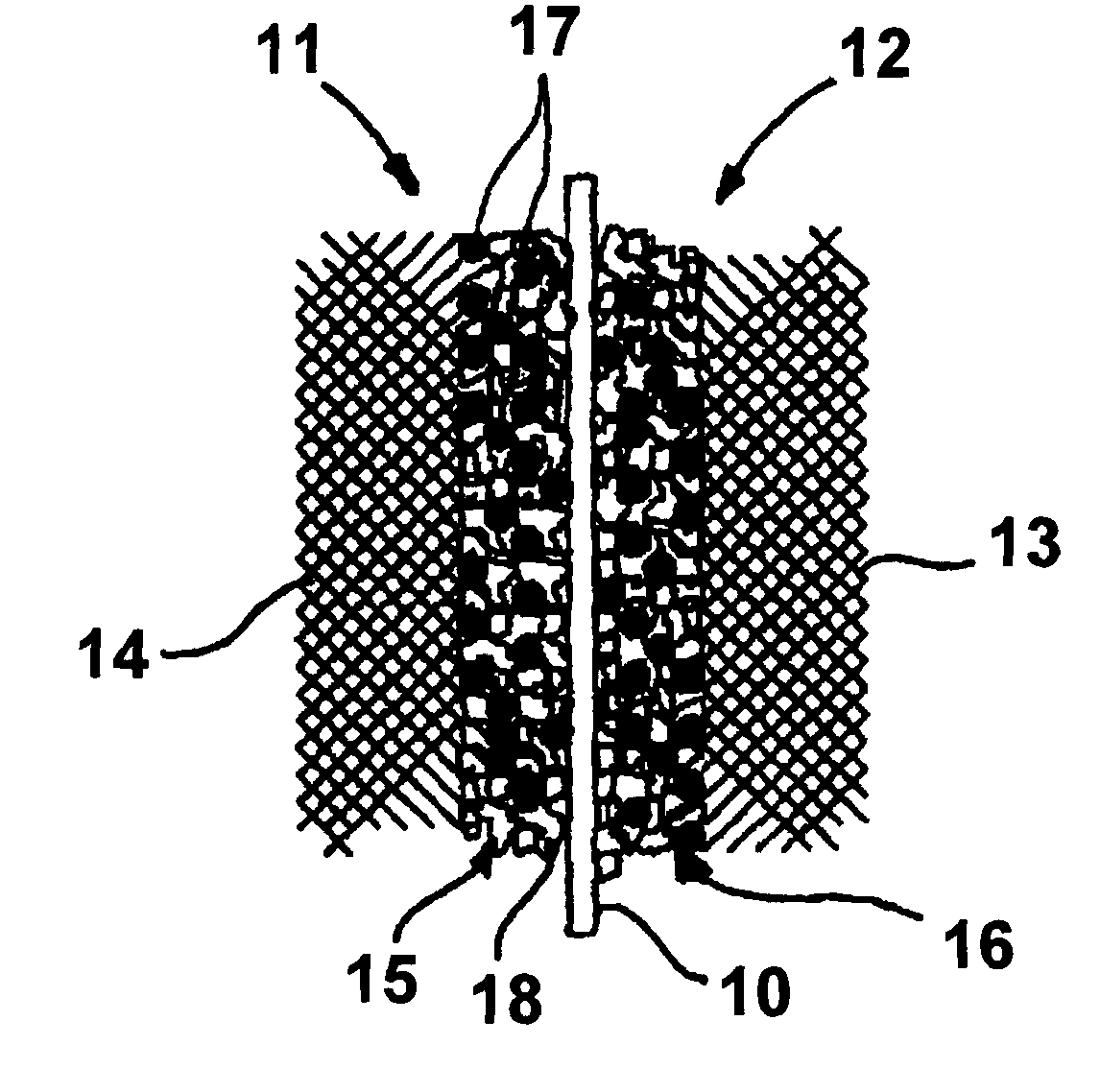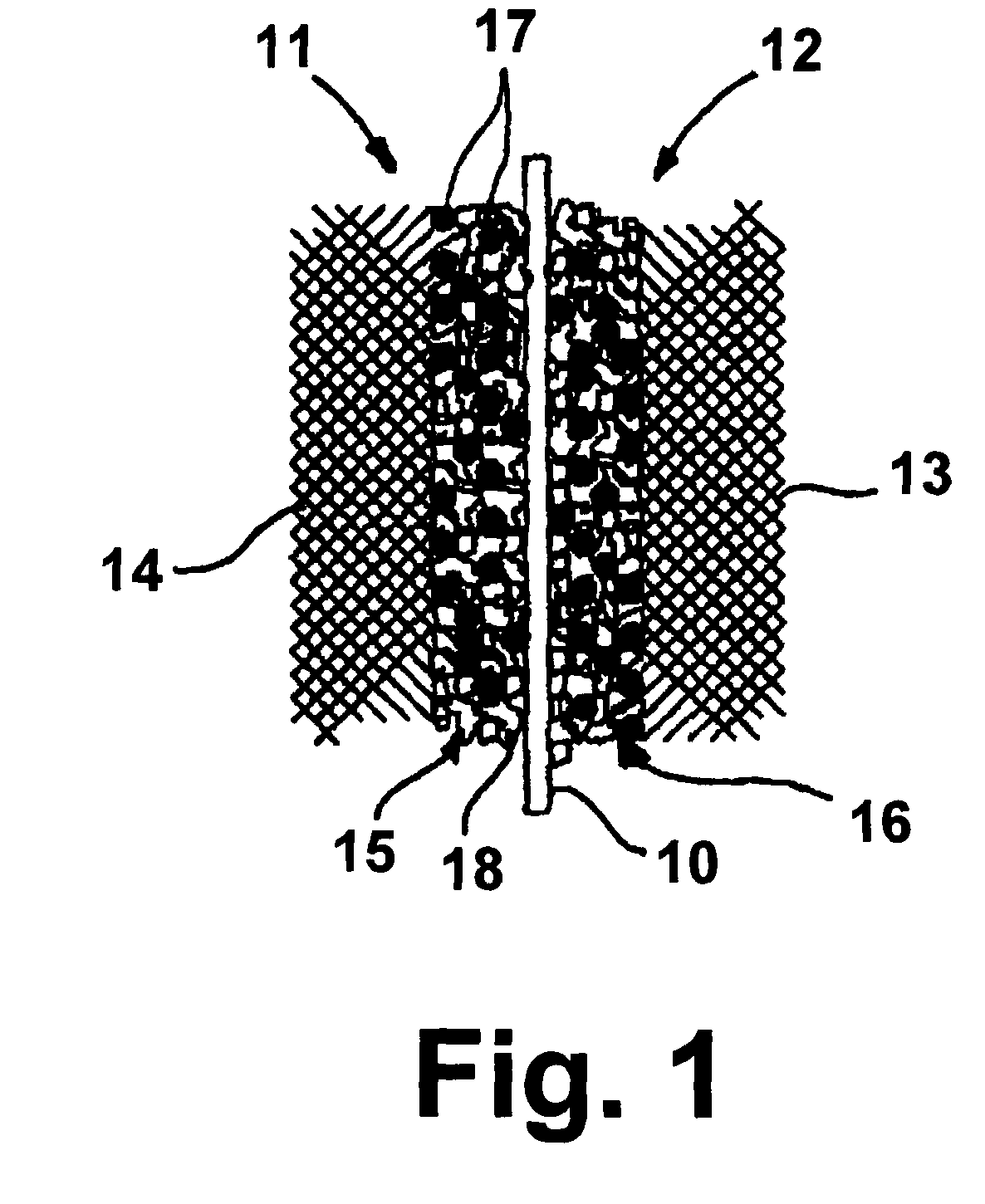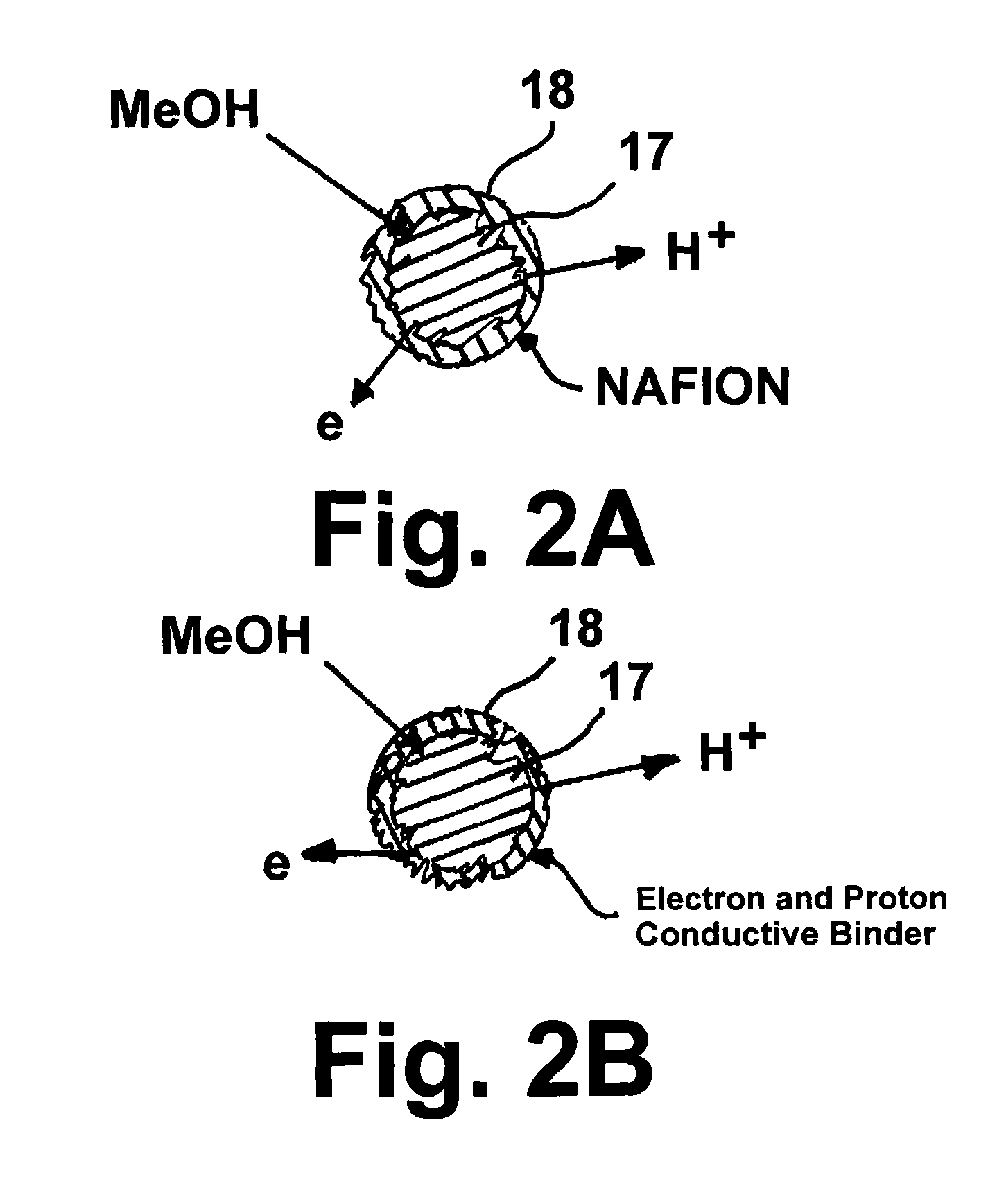Direct methanol fuel cell electrode catalyst
a fuel cell electrode and catalyst technology, applied in the field of direct methanol fuel cell electrode catalysts, can solve the problems of inability of the membrane electrolyte to be an effective methanol barrier, lack of catalyst activity at the anode, and potential replacement of rechargeables, so as to reduce methanol transport, reduce or eliminate methanol reach, and increase electron and proton conduction
- Summary
- Abstract
- Description
- Claims
- Application Information
AI Technical Summary
Benefits of technology
Problems solved by technology
Method used
Image
Examples
example
[0029]Anode catalyst, PtRu (1:1), was purchased from Johnson Matthey. The catalyst was mixed with an amount of water and isopropanol (1:1) sufficient to wet the catalyst. Then a 20% by weight portion of a 5% NAFION emulsion (DuPont) was mixed with the wetted catalyst. Thereafter, a 10% by weight portion of polyaniline (emeraldine salt), long chain grafted to lignin (Sigma-Aldrich), was mixed with the anode catalyst, resulting in formation of a catalyst ink. After stirring for two hours, the ink was ready to apply to the electrolyte membrane or gas diffusion electrodes. As shown in FIG. 3, the performance of a direct methanol fuel cell employing in the range of about 5 wt. % to about 20 wt. % polyaniline catalyst ink is improved over a conventional cell operating without the benefit of this invention. Also as shown, the best performance is obtained using about 10 wt. % polyaniline ink.
[0030]Also disclosed herein is a method for reducing or substantially eliminating methanol crossover...
PUM
| Property | Measurement | Unit |
|---|---|---|
| thickness | aaaaa | aaaaa |
| thickness | aaaaa | aaaaa |
| proton conductive | aaaaa | aaaaa |
Abstract
Description
Claims
Application Information
 Login to View More
Login to View More - R&D
- Intellectual Property
- Life Sciences
- Materials
- Tech Scout
- Unparalleled Data Quality
- Higher Quality Content
- 60% Fewer Hallucinations
Browse by: Latest US Patents, China's latest patents, Technical Efficacy Thesaurus, Application Domain, Technology Topic, Popular Technical Reports.
© 2025 PatSnap. All rights reserved.Legal|Privacy policy|Modern Slavery Act Transparency Statement|Sitemap|About US| Contact US: help@patsnap.com



